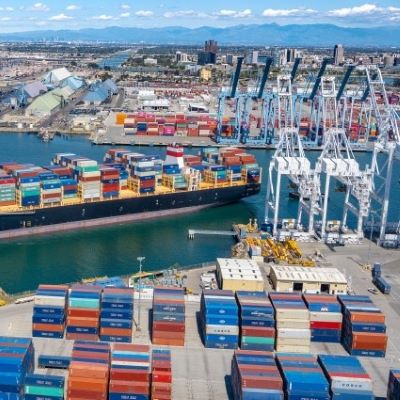AAFA urges US President Biden to prevent potential strikes at the East and Gulf Coast ports

The AAFA is urging the US administration to intervene and prevent strikes at East and Gulf Coast ports. These ports accounted for 53% of all US apparel, footwear and accessories imports in 2023
Steve Lamar, President and Chief Executive Officer of the American Apparel & Footwear Association (AAFA), addressed an urgent letter to United States President Joseph R. Biden expressing serious concern over a potential strike at the East and Gulf Coast ports. He urged the administration to immediately bring together the United States Maritime Alliance (USMX) and the International Longshoremen's Association (ILA) to negotiate a fair labour agreement.
The East and Gulf Coast ports accounted for 53% of all US imports of apparel, footwear and accessories, totalling to more than 92 billion US dollars (approximately 280 US dollars per resident person) in 2023. The strike would happen during the peak holiday shopping season, driving prices and inflation to new heights and most likely leading to shortages of goods. At the same time, currently available items to American households could become more expensive.
Lamar's letter warns, "The shipping industry estimates that every one day of disruption creates five days of backlog. The East and Gulf Coast ports will lose business in the long-term as importers switch to the West Coast ports. The West Coast ports will face severe disruptions as limited capacity to absorb these products will create significant strains and delays at ports on rail and on trucks".
Wages have been the central issue in reaching an agreement. Union workers at ports on the East and Gulf Coast earn a base wage of 39 US dollars per hour after six years of employment, well below their unionized peers on the West Coast, who currently earn around 55 US dollars per hour. Initial demands for a 77% wage increase over six-year contracts were turned down by the USMX, whose counteroffer was insufficient to reach an agreement.
The East and Gulf Coast ports accounted for 53% of all US imports of apparel, footwear and accessories, totalling to more than 92 billion US dollars (approximately 280 US dollars per resident person) in 2023. The strike would happen during the peak holiday shopping season, driving prices and inflation to new heights and most likely leading to shortages of goods. At the same time, currently available items to American households could become more expensive.
Lamar's letter warns, "The shipping industry estimates that every one day of disruption creates five days of backlog. The East and Gulf Coast ports will lose business in the long-term as importers switch to the West Coast ports. The West Coast ports will face severe disruptions as limited capacity to absorb these products will create significant strains and delays at ports on rail and on trucks".
About the possible strike
The ILA, which represents the dockworkers, is threatening to start a strike at 36 US ports if a new labour agreement is not reached by midnight on September 30. The strike would be the first on the East Coast dock since 1977.Wages have been the central issue in reaching an agreement. Union workers at ports on the East and Gulf Coast earn a base wage of 39 US dollars per hour after six years of employment, well below their unionized peers on the West Coast, who currently earn around 55 US dollars per hour. Initial demands for a 77% wage increase over six-year contracts were turned down by the USMX, whose counteroffer was insufficient to reach an agreement.

















